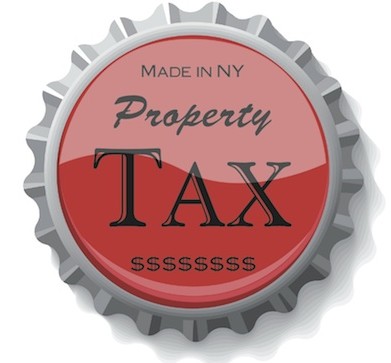
 Seven years after its enactment, Governor Andrew Cuomo’s cap on property tax levies continues to be a target of unfounded criticism by some politicians and candidates who either don’t understand the cap or deliberately misrepresent how it works.
Seven years after its enactment, Governor Andrew Cuomo’s cap on property tax levies continues to be a target of unfounded criticism by some politicians and candidates who either don’t understand the cap or deliberately misrepresent how it works.
The tax cap slows the growth of local government and school district property tax levies outside New York City to a maximum of 2 percent or the inflation rate, whichever is less. The cap is subject to a short list of exceptions and exclusions; it also can be overridden by a 60 percent vote of a county or municipal legislative body, or 60 percent of voters in school budget referendums.
Cuomo’s cap has saved property owners outside the city billions of dollars in tax increases, compared to what might have been expected if previous, unlimited trends had continued.
Yet the tax cap continues to get potshots from some elected officials and organizations that would prefer to see more government spending.
Take, for example, the claim by Michelle Ostrelich, Democratic challenger to state Sen. James Tedisco (R-Schenectady), at last week’s 49th state Senate district debate in Saratoga County. Echoing a favorite claim of tax cap critics, Ms. Ostrelich said:
It [the cap] penalizes successful communities…A number of leaders in the district explained to me that it affects their town budgets. If your county is growing and you have more businesses you have to go above that tax cap by the nature of the calculation. You have to go for a vote to override the cap.
In fact, the opposite is true: the tax cap is expressly designed to encourage and reward development by adding a “growth factor” boosting each locality’s levy limit by amounts reflecting the value of new construction in the previous 12 months.
Speaking of successful communities, Saratoga County’s 2019 growth factor of 1.0137—further increasing the county’s allowable levy increase by 1.37 percentage points—is the highest in the state.
Another common tax-cap whopper was repeated recently by East Hampton councilman David Lys, running for election to complete a term, who said the cap “prevents” the town from paying for certain initiatives. In fact, under the law, it takes three votes for East Hampton’s five-member board to override the cap—the same number it takes to pass or fund anything.
Dismissing similar complaints from other Long Island pols in this New York Post commentary in 2015, E.J. McMahon summed it this way:
Long Island and the lower Hudson Valley are saddled with some of the highest local property taxes in the country relative to homeowners’ incomes—and while town taxes are a relatively small share of the total, all levels of government need to control their appetites as a way of lowering those burdens in the long run.
Instead of complaining about the tax cap, local pols should press Albany harder for relief from state mandates that make it difficult to restructure costly compensation packages for public employees. They also should do more to resist and spotlight state laws that drive up local infrastructure costs, including union prevailing-wage requirements.
The tax cap’s future
Cuomo originally proposed the tax cap as a permanent, stand-alone bill, but ultimately agreed (supposedly at the insistence of then-Assembly Speaker Sheldon Silver) to awkwardly link the tax cap to the temporary state law regulating rents in New York City. Last renewed in 2015, that law next expires in June 2019. The tax cap provision has a back-up “sunset” one year beyond that (June 2020), in case the rent laws lapse or are radically changed in a way that might effectively kill the cap.
In the meantime, the past two years have seen a parade of bills in both legislative houses that would weaken, if not completely gut, the tax cap.
This much seems clear: without the cap as currently written, New York would rapidly return to the days when school taxes were increasing at twice or three times the rate of inflation.







